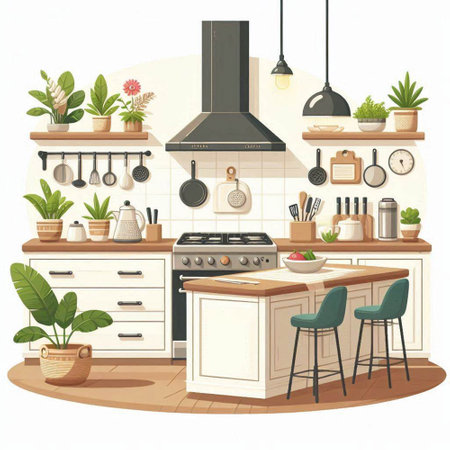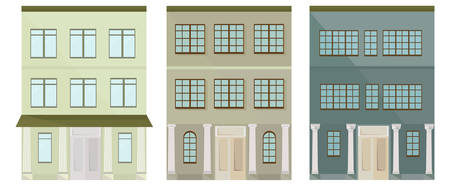1. Understanding the Architectural Features
When approaching the challenge of decorating compact spaces within Victorian and Edwardian houses, it is essential first to understand the defining architectural features that set these properties apart. These period homes, commonly found throughout the UK, are renowned for their distinctive character and charm, often boasting high ceilings, intricate mouldings, and generously proportioned sash or bay windows. However, their layouts can also present unique spatial constraints, with rooms typically arranged in a linear fashion and sometimes separated by narrow hallways or partition walls. The ceiling height in many Victorian and Edwardian homes offers an opportunity to introduce vertical decorative elements or shelving solutions, while original cornices and ceiling roses demand a sensitive design approach that respects heritage detail. Similarly, window styles—whether classic timber sashes or stained glass transoms—invite careful consideration of natural light, privacy, and energy efficiency when selecting window dressings. By fully appreciating these architectural nuances at the outset, you lay a solid foundation for stylish yet functional décor choices tailored to the authentic spirit of your period property.
2. Maximising Space with Multi-Functional Furniture
When decorating small spaces in Victorian and Edwardian houses, a key consideration is maximising the available area without sacrificing period character. The importance of selecting compact, dual-purpose furnishings cannot be overstated, as these pieces offer both utility and style—critical for homes where room sizes are often modest by contemporary standards. Traditional properties frequently feature intricate mouldings, high ceilings, and alcoves that can either constrain or inspire furniture placement. To achieve a harmonious balance between style and function, it is crucial to choose furniture that not only serves more than one purpose but also complements the original architectural details.
Why Multi-Functional Furniture Matters
Victorian and Edwardian interiors are known for their elegance, yet their layouts can be challenging when it comes to modern living needs. Incorporating multi-functional furniture allows residents to utilise every inch of space efficiently. For example, ottomans with hidden storage, extendable dining tables, or sofa beds provide practical solutions while echoing the refined aesthetics of the period. These choices are especially beneficial in reception rooms, bedrooms, and converted basements or lofts where space is at a premium.
Examples of Dual-Purpose Furnishings
| Furniture Piece | Primary Function | Secondary Function | Period Style Features |
|---|---|---|---|
| Storage Ottoman | Seating | Hidden Storage | Button-tufted upholstery, carved wooden legs |
| Sofa Bed | Sofa for lounging | Guest bed | Rolled arms, patterned fabric reminiscent of the era |
| Nesting Tables | Coffee table surface | Additional side tables when needed | Turned wood legs, inlaid tops |
| Bureau Bookcase | Desk workspace | Book storage/display cabinet | Glazed doors, decorative cornices |
| Drop-leaf Dining Table | Dinner table | Slim console when folded down | Pine or mahogany finish with period hardware |
Selecting Pieces That Honour Period Aesthetics
The selection process should always consider how each piece will integrate with existing features such as fireplaces, dado rails, or stained glass. Opt for items that reflect Victorian or Edwardian motifs—think cabriole legs, ornate handles, or rich woods—so that functionality does not come at the expense of heritage charm. This approach ensures that even as you embrace modern practicality, your interior remains true to its historical roots.

3. Respecting Period Details in Modern Decor Schemes
When approaching the design of compact Victorian and Edwardian homes, one must carefully balance contemporary comforts with a deep respect for original architectural features. Integrating modern furnishings can breathe new life into historic spaces, but it is crucial that these additions do not detract from the inherent character that makes these properties so desirable.
Preserving Architectural Heritage
Key period details such as ornate fireplaces, substantial skirting boards, and decorative stained glass often serve as focal points in rooms. Rather than masking or removing these elements, consider ways to highlight them. Positioning minimalist or neutral-toned furniture near a detailed fireplace ensures it remains the centrepiece. Likewise, keeping window treatments simple allows stained glass panels to filter light and become an ever-changing artwork within the room.
Integrating Contemporary Pieces Thoughtfully
Select modern pieces that are sympathetic in scale and tone to the original features. For instance, opt for low-profile seating or open-legged furniture to avoid visually crowding intricate skirting boards. When introducing bold colours or patterns, limit their use to accents—such as cushions or throws—rather than dominant surfaces, ensuring the period details retain their visual prominence.
Blending Old and New with Sensitivity
The key is restraint: let period features guide your layout and palette choices. For example, echo the hues found in stained glass when choosing accessories or art. Use modern lighting discreetly to spotlight cornicing or ceiling roses, rather than competing for attention. By thoughtfully layering new elements with old, you create interiors that feel both current and authentic to their heritage context.
4. Utilising Colour and Light to Enhance Small Rooms
When decorating compact spaces in Victorian and Edwardian houses, a strategic approach to colour and light can significantly alter the perception of size and ambience. Traditional British interiors often embrace a rich historical palette, yet modern trends also favour clever use of lighter tones, reflective surfaces, and soft furnishings to create a sense of openness while preserving period character.
Choosing Suitable Paint Colours
Classic hues popular in Victorian and Edwardian times—such as muted sage greens, dusky pinks, and gentle blues—can be balanced with contemporary lighter shades to visually expand small rooms. Opting for off-whites or pastel tones on walls and ceilings reflects natural light more effectively, creating an airy atmosphere without losing the integrity of the property’s heritage.
| Historical Palette | Modern Adaptation | Recommended Use |
|---|---|---|
| Sage Green | Pale Mint | Walls or Woodwork Accents |
| Dusty Rose | Soft Blush Pink | Feature Walls or Cornices |
| Cornflower Blue | Pale Sky Blue | Ceilings or Alcoves |
| Creamy White | Bright White | Main Walls & Trim |
Wallpaper Patterns: Classic Meets Contemporary
The British tradition of ornate wallpapers continues to influence today’s interiors. In smaller Victorian and Edwardian rooms, select patterns that are delicate and not overly busy. Vertical stripes or subtle damasks can elongate wall height, while light-reflective metallics bring additional brightness without overwhelming the space.
Popular Wallpaper Choices for Small Period Rooms:
- Narrow vertical stripes in soft tones for increased height perception.
- Tonal florals with ample negative space, reflecting the Arts & Crafts heritage.
- Light metallic accents (e.g., silver or champagne) to catch natural daylight.
Soft Furnishings and Light Manipulation
Fabrics play a crucial role in both comfort and visual expansion. Sheer curtains allow maximum daylight penetration while maintaining privacy—a hallmark of British homes. Mirrors, carefully positioned opposite windows or fireplaces, bounce light around and create depth. Upholstery in lighter shades or classic floral prints can tie together period charm with a fresh feel.
| Soft Furnishing Type | Style Suggestion | Effect on Space |
|---|---|---|
| Curtains/Blinds | Linen sheers in cream or pale blue | Enhances daylight, softens edges |
| Cushions/Upholstery | Pale floral chintz or velvet in pastel hues | Adds comfort without visual clutter |
| Rugs & Throws | Light neutral tones with subtle motifs | Zoning areas, increases perceived floor space |
| Mirrors & Reflective Accessories | Antique gilt frames or modern minimal shapes | Bounce natural light, add depth to narrow rooms |
Summary: Harmonising Old with New through Colour and Light
The key to enhancing small Victorian and Edwardian interiors lies in balancing tradition with techniques that brighten and open up spaces. By thoughtfully selecting paint colours rooted in historical palettes yet adapted for modern living, opting for wallpaper patterns that create visual movement, and incorporating soft furnishings that amplify light, you can successfully blend style with function—quintessentially British in both spirit and execution.
5. Storage Solutions that Blend with Heritage Interiors
When living in a Victorian or Edwardian house, one of the biggest challenges is introducing practical storage without compromising the property’s historic charm. Many of these homes were built before modern concepts of clutter and convenience, so finding space for everyday essentials requires a thoughtful approach. The key is to choose discreet and effective storage solutions that both serve your needs and complement period features.
Built-in Wardrobes: Maximising Space, Minimising Impact
Unlike free-standing wardrobes that can appear bulky or out of place, built-in wardrobes offer a sleek alternative. By designing cabinetry to fit alcoves or unused corners, you can create generous storage while preserving decorative cornices, skirting boards, and original fireplaces. Custom joinery allows for painted finishes and panel details that echo original mouldings—ensuring your storage feels like a natural extension of the room rather than an intrusive addition.
Under-Stair Cupboards: Unseen, Yet Invaluable
The area beneath staircases in period homes is often underutilised. By converting this space into cleverly designed cupboards or drawers, you gain valuable hidden storage for shoes, coats, cleaning supplies or even seasonal items. Use woodwork styles and hardware that mirror existing banisters or doors to maintain visual harmony throughout your hallway.
Other Heritage-Friendly Storage Ideas
Consider repurposing original features such as window seats with lift-up lids for storing linens or children’s toys. Shallow shelving in recesses can display books and treasures without overwhelming delicate plasterwork. In kitchens, traditional larder cupboards or bespoke pantries provide ample capacity for dry goods while echoing the home’s historical aesthetic. Always opt for materials and finishes—like painted timber or period-appropriate handles—that respect the age and architecture of your house.
By integrating storage seamlessly into heritage interiors, you preserve both function and character—ensuring your small Victorian or Edwardian home remains elegant, organised, and true to its origins.
6. Navigating Listed Building Considerations
When decorating small spaces in Victorian and Edwardian houses, particularly those with listed status or situated within conservation areas, it is crucial to understand the unique legal and practical obligations that apply. These historic properties are often subject to stringent regulations designed to preserve their architectural integrity and heritage value. For tenants and homeowners alike, failing to comply with these requirements can result in severe penalties and potentially costly restoration mandates.
Understanding Listed Status and Conservation Areas
A property’s listed status denotes its recognition on the National Heritage List for England, categorised as Grade I, II*, or II depending on significance. Similarly, conservation areas are designated by local authorities to protect the overall character of a neighbourhood. Any work that might affect the appearance or structure of such properties, including interior decoration and minor alterations, may require formal consent beyond standard planning permission.
Landlord Permissions: The Tenant’s Legal Obligations
If you are renting a listed Victorian or Edwardian property, your tenancy agreement will almost certainly stipulate that written landlord consent is required before undertaking any decorative works—even painting or wallpapering. Landlords themselves must comply with statutory obligations and may need to seek Listed Building Consent from the local planning authority prior to granting tenant requests. Proceeding without explicit authorisation could constitute both a breach of lease and a violation of heritage law.
Compliance with UK Planning Requirements
Decorative choices that appear innocuous—such as installing shelving, altering fireplaces, or changing window treatments—may actually impact original features protected under listing regulations. In many cases, even reversible changes require formal approval. It is essential to consult the local planning authority early in your design process to clarify what permissions are necessary. Failure to secure appropriate consents can result in enforcement action, requiring restoration at your expense and potential legal repercussions.
Best Practice for Balancing Style, Function, and Compliance
To successfully balance style and function while respecting regulatory boundaries, focus on non-invasive enhancements: use freestanding furniture rather than fixed units, select removable décor elements, and emphasise textiles for colour and comfort. Always document communications with landlords and authorities, retain copies of approvals, and engage specialist contractors familiar with heritage properties where possible. By approaching decoration with due diligence and respect for legal frameworks, you can enhance your living space without compromising its historic value or breaching your contractual obligations.


